Abstract
The Health Promotion and Disease Prevention Survey, a component of the 1985 National Health Interview Survey (NHIS), contained a set of questions on injury control and child safety and health. The data collected from the responses were used to evaluate progress toward achieving three of the 1990 objectives for the nation related to injury prevention. Those three objectives concerned the proportions of households with a properly placed and functioning smoke detector (63.2 percent, as shown by the survey), parents who can identify appropriate measures to address the risks to their children of motor vehicle injuries, burns, and poisonings (39.1 percent), and primary health providers who advise their patients about the importance of using safety belts and child restraint devices in cars (47.0 percent). Further, information was gathered on the proportion of adults using seatbelts all or most of the time (35.5 percent) and the proportion of those who knew the range of hot water temperatures (120 degrees to 130 degrees F.) above which scald injuries can occur (21.3 percent). In general, the data demonstrated a direct relationship of injury prevention awareness to education and income. In the future it will be important to demonstrate that increasing injury awareness has a measurable, beneficial impact on injury mortality and morbidity rates.
Full text
PDF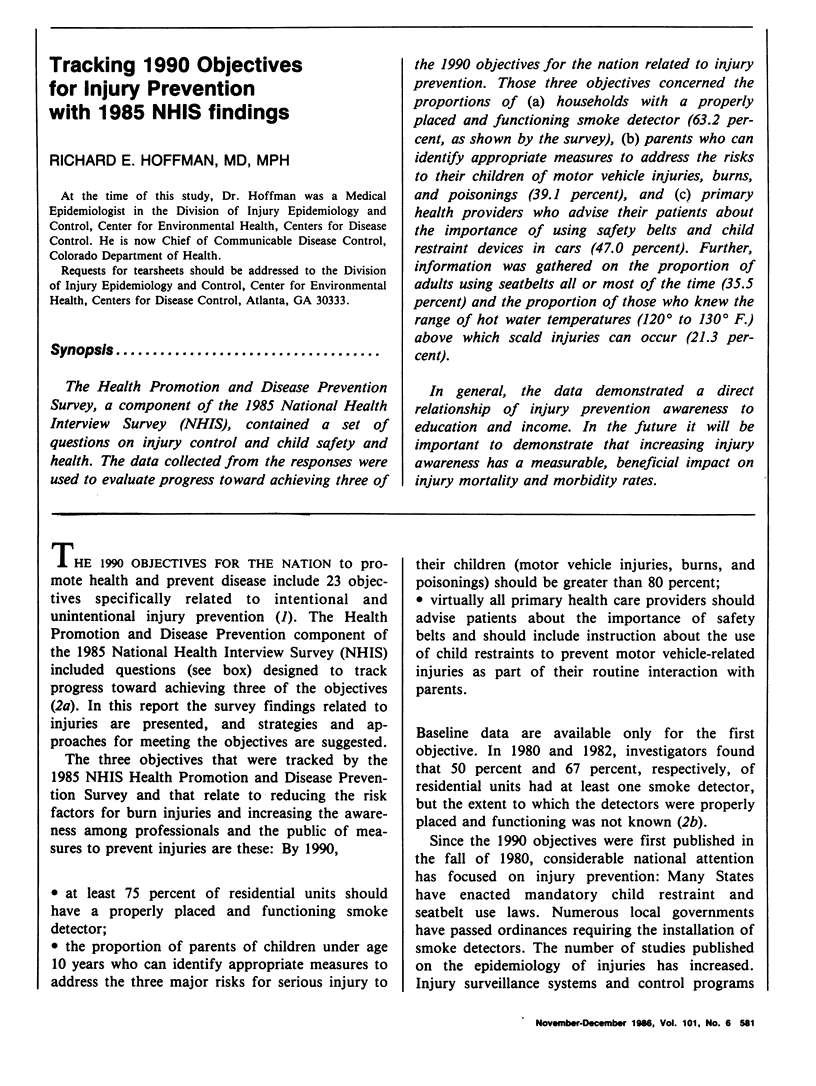
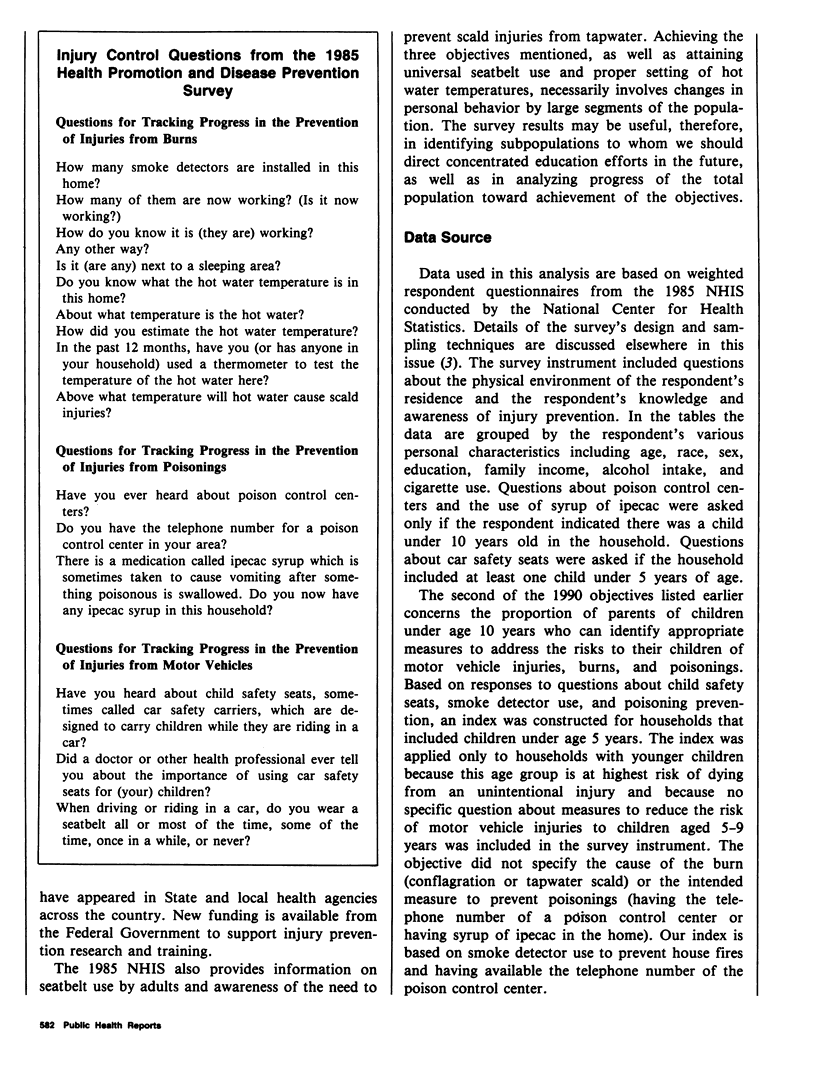
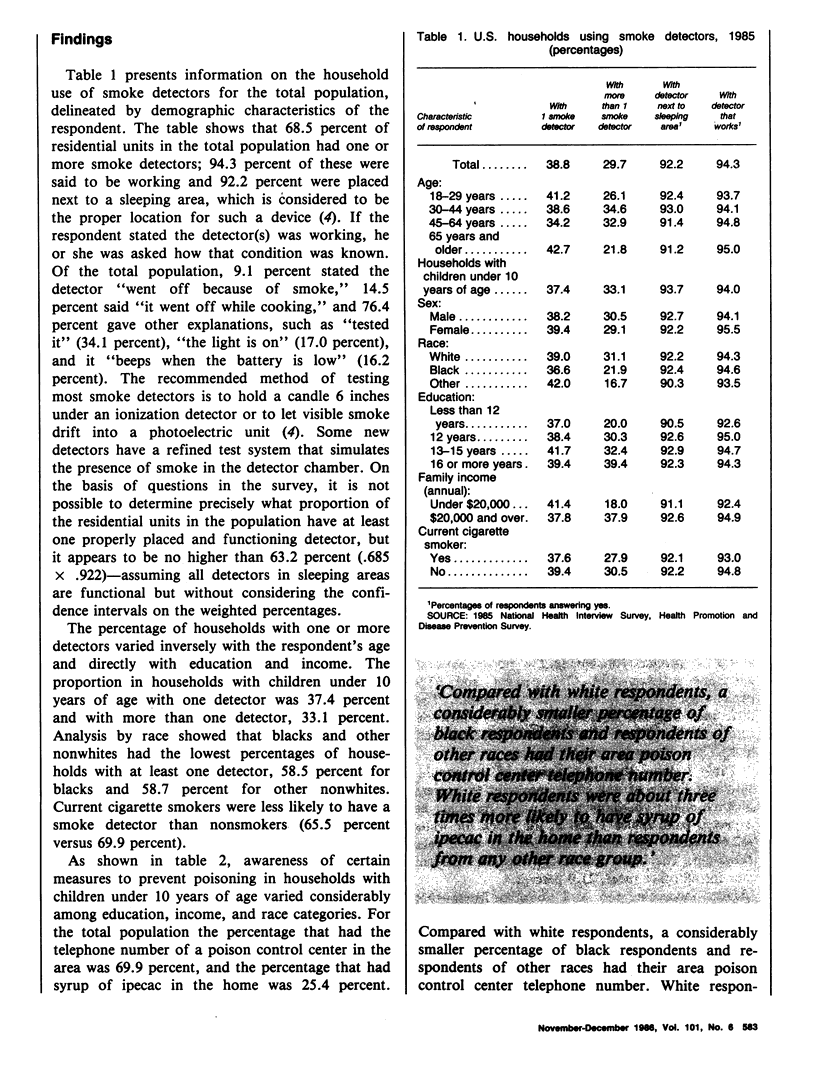
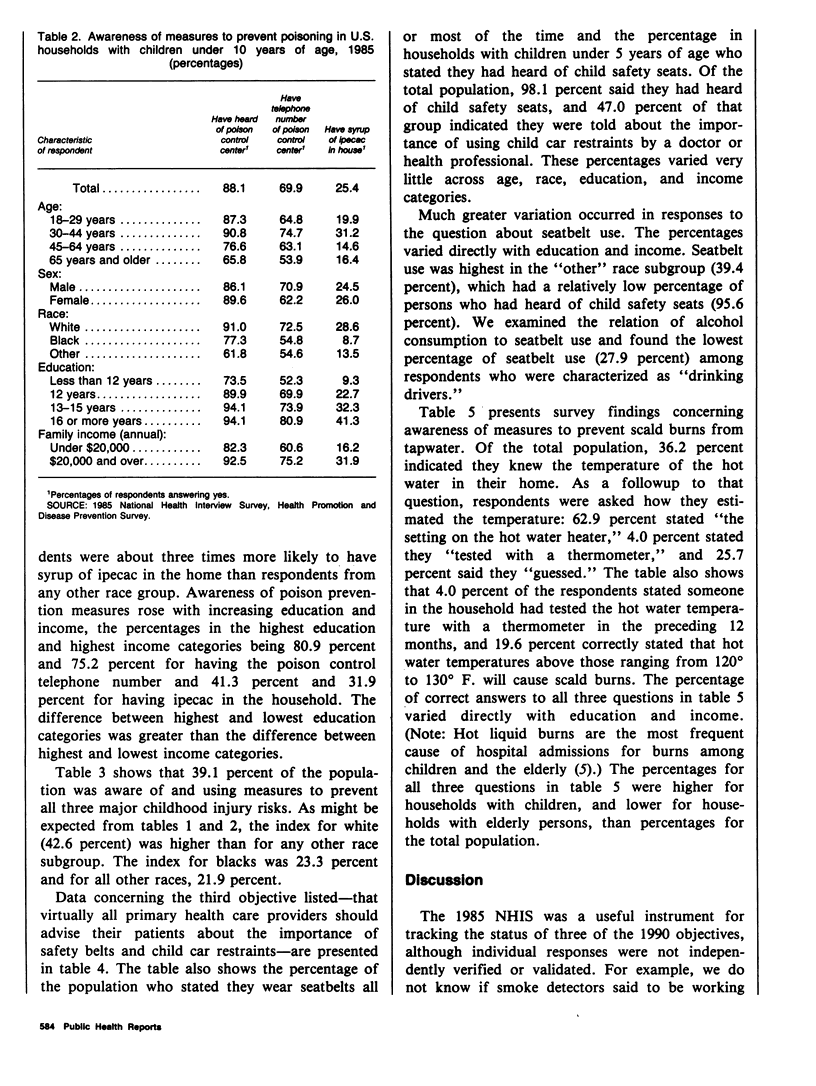
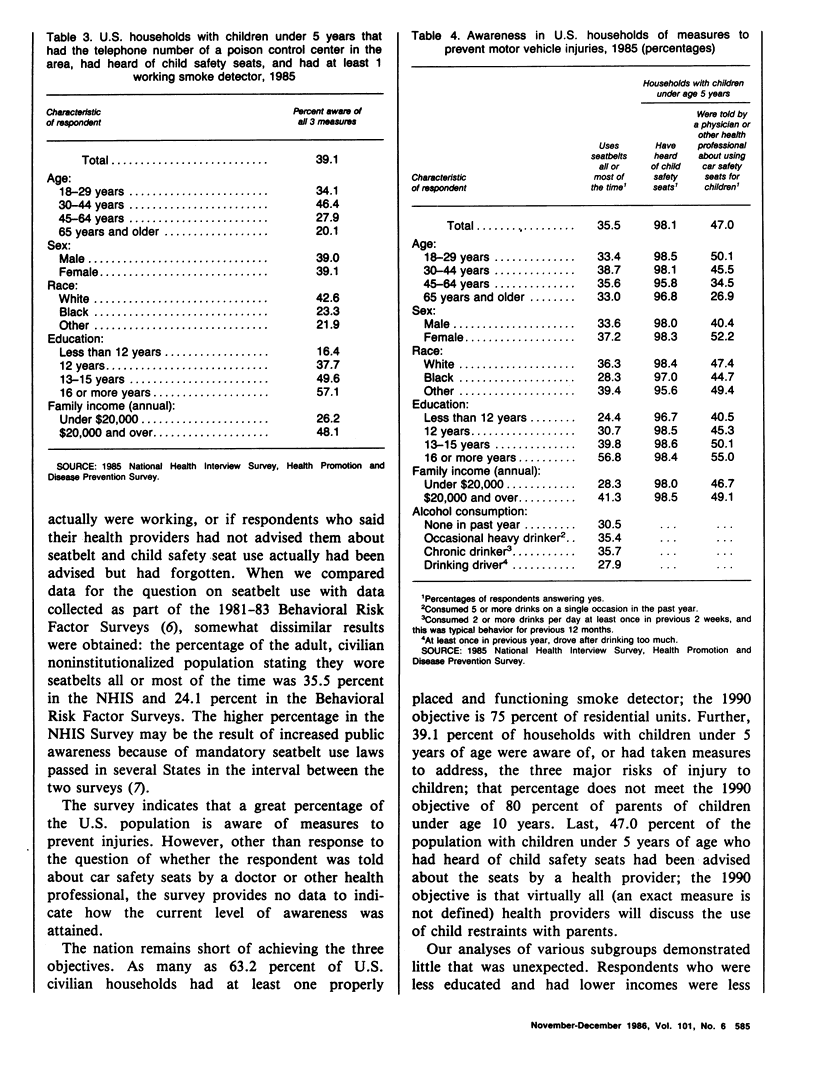
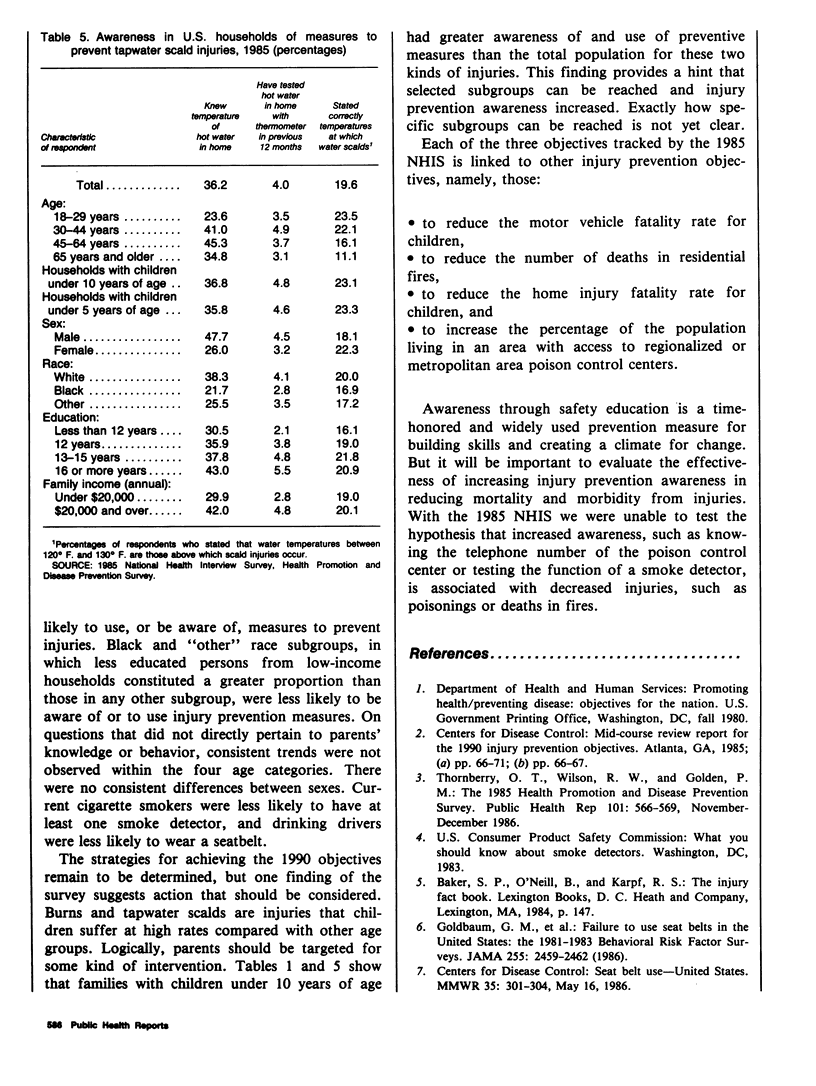
Selected References
These references are in PubMed. This may not be the complete list of references from this article.
- Goldbaum G. M., Remington P. L., Powell K. E., Hogelin G. C., Gentry E. M. Failure to use seat belts in the United States. The 1981-1983 Behavioral Risk Factor Surveys. JAMA. 1986 May 9;255(18):2459–2462. [PubMed] [Google Scholar]
- Thornberry O. T., Wilson R. W., Golden P. M. The 1985 health promotion and disease prevention survey. Public Health Rep. 1986 Nov-Dec;101(6):566–570. [PMC free article] [PubMed] [Google Scholar]


